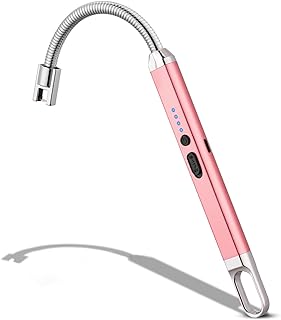The Future of Lighters: Technological Advancements and Trends
While lighters seem like a simple, mature product, the future holds exciting possibilities for innovation and evolution. Here's a look at some potential technological advancements and emerging trends:
1. Sustainability and Eco-Friendly Design:
* Biodegradable and reusable materials: Moving away from traditional plastic lighters, manufacturers are exploring bio-based plastics, recycled materials, and even metal designs that are more sustainable and can be reused.
* Refillable lighters: Promoting a "refill, not landfill" mentality, refillable lighters with replaceable fuel cartridges are gaining traction. This minimizes waste and reduces reliance on disposable lighters.
* Electric lighters: These eco-friendly options eliminate the need for butane and offer safer, cleaner alternatives for igniting candles, stoves, or outdoor fires.
2. Smart Features and Connected Devices:
* Smart lighters with Bluetooth connectivity: Imagine lighters that can be controlled remotely via an app, allowing for precise flame adjustments, temperature control, and even automatic ignition based on pre-programmed settings.
* Integrated sensors and safety features: Future lighters might include sensors that automatically detect wind conditions, adjust the flame intensity, or even shut off the flame if it��s accidentally left unattended.
* Interactive lighters with LED displays: Lighters might incorporate small LED displays that provide information on battery life, fuel levels, or even customized messages.
3. Advanced Functionality and Design:
* Multi-purpose lighters: Integrating additional features like a built-in bottle opener, a flashlight, or even a small knife can make lighters more versatile and appealing to diverse audiences.
* Ergonomic design and intuitive interfaces: Focusing on user experience, lighters might incorporate comfortable grips, intuitive controls, and sleek, modern aesthetics.
* Novel ignition mechanisms: Innovative ignition mechanisms beyond traditional flints and spark wheels could be explored, potentially utilizing laser technology or other advanced methods.
4. Niche Applications and Market Segments:
* Specialized lighters for specific purposes: Lighters designed for specific activities, such as camping, cooking, or even smoking, could feature specialized features tailored to those needs.
* High-end lighters for luxury markets: Luxury brands might introduce lighters crafted from precious metals, featuring intricate designs, and employing cutting-edge technology to appeal to a discerning clientele.
5. Challenges and Considerations:
* Regulation and safety: New technological advancements in lighters will require stringent safety standards and regulations to ensure consumer safety and prevent misuse.
* Cost and accessibility: Integrating advanced technologies might initially increase the cost of lighters, potentially limiting their accessibility to wider audiences.
* Consumer adoption: Consumers need to be educated about the benefits and features of new, innovative lighters to drive adoption and promote the transition from traditional models.
In conclusion, the future of lighters promises a blend of sustainability, smart features, and advanced design. By embracing innovative technologies and responding to consumer needs, the humble lighter could evolve into a more eco-friendly, functional, and even aesthetically pleasing object in the years to come.


